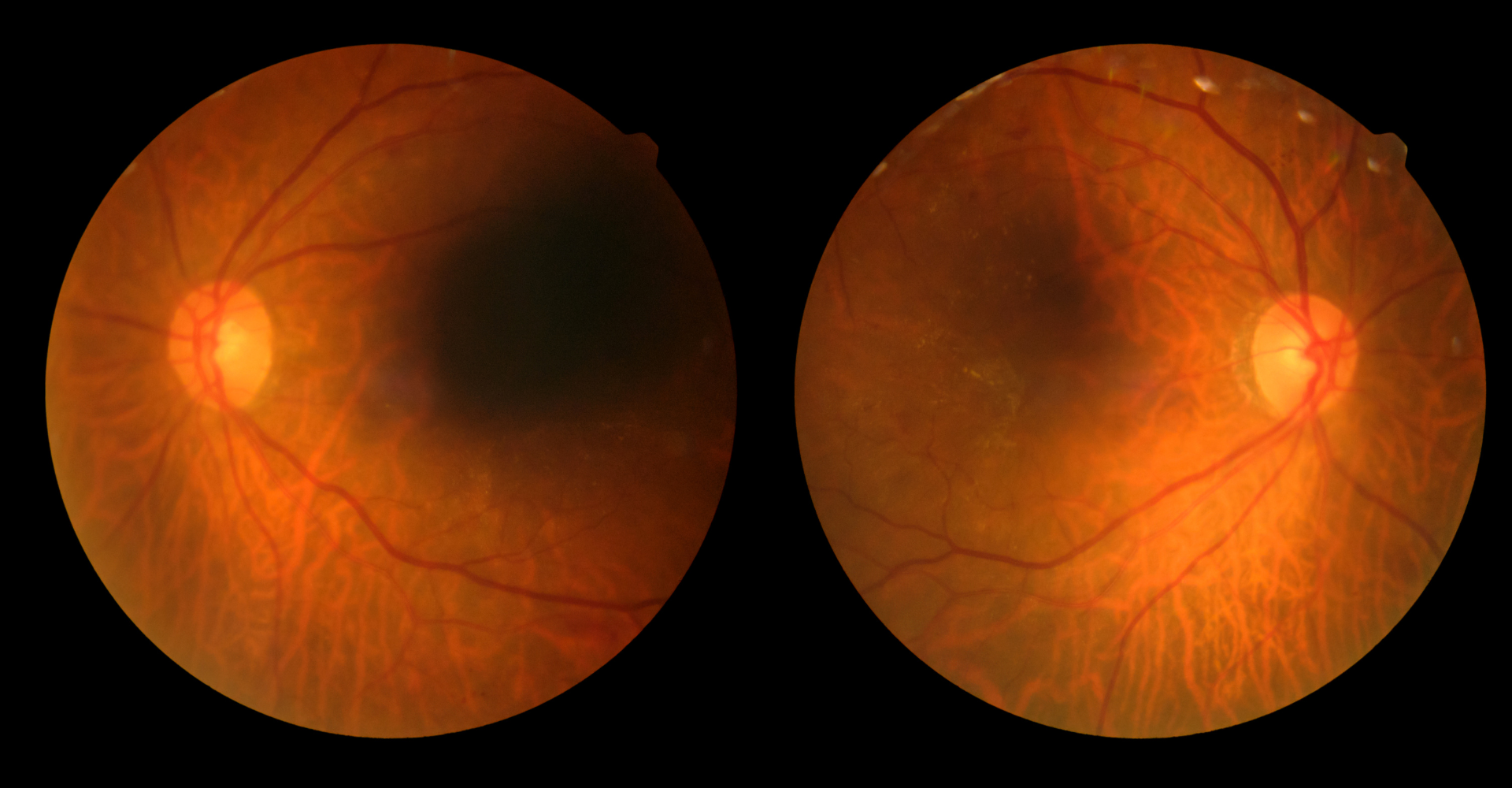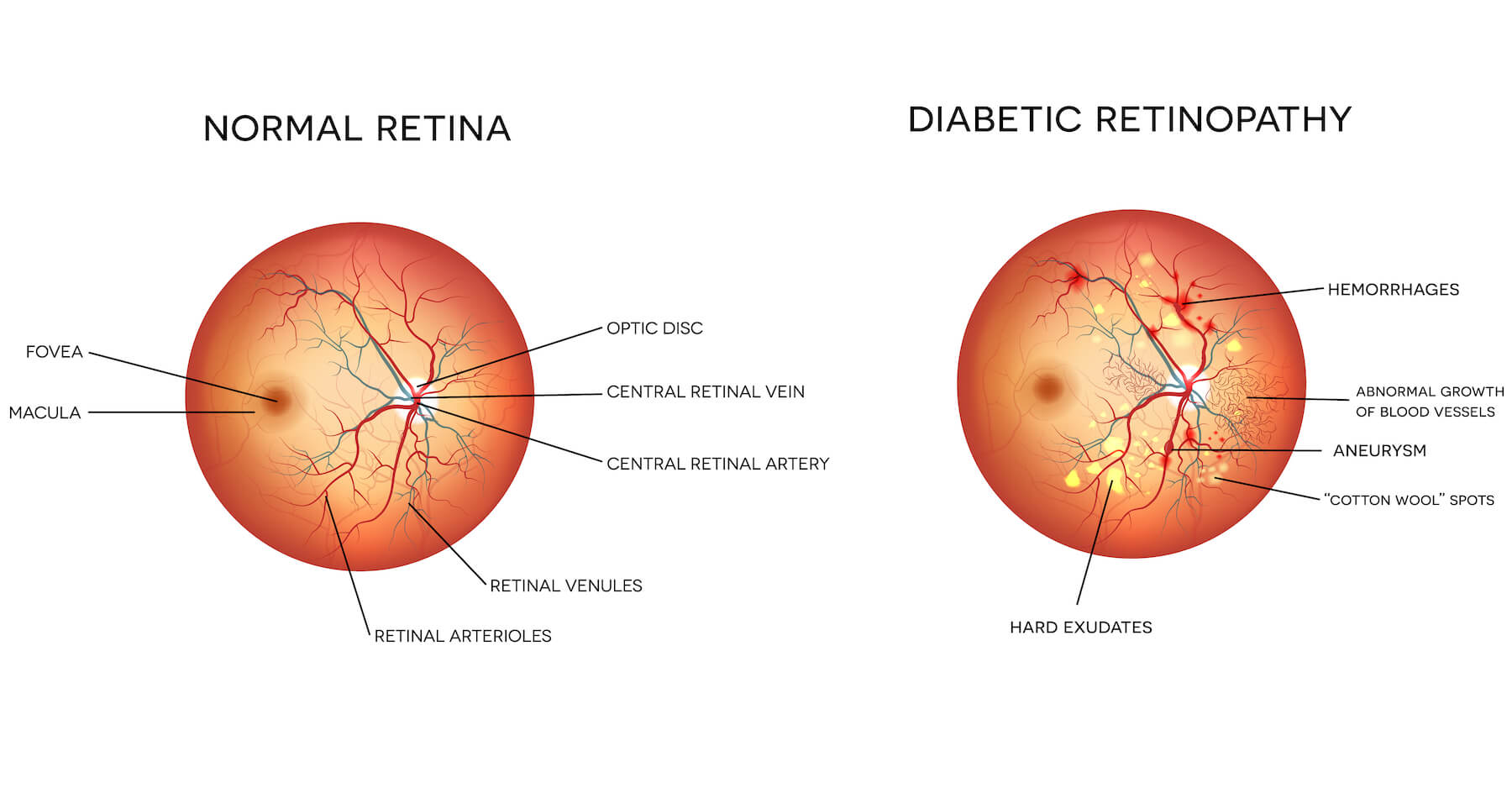Did you know that diabetic retinopathy (DR) is an eye disease that can lead to vision loss and that it’s the leading cause of vision loss in Canadians of working age?
Diabetic retinopathy produces few symptoms until serious complications emerge, which can lead to severe vision loss or even blindness. For this reason, just testing sight during an eye examination does not detect disease. Watch the video below for an explanation of the difference between an eye exam and a sight test.
Stages of Diabetic Retinopathy
Diabetic retinopathy develops when the blood vessels in the retina become damaged due to diabetes. The different stages and types of the condition include:
- Nonproliferative Diabetic Retinopathy (NPDR): This early stage may lead to retinal swelling, retinal deposits, and minor blood vessel leakage in the retina.
- Macular Edema: This condition refers to the swelling of the macula, the central area of the retina responsible for sharp, detailed vision, due to fluid leakage from retinal blood vessels. It is the most common cause of visual impairment in diabetes.
- Macular Ischemia: Vision blurs as small blood vessels in the retina close, depriving the macula of adequate blood supply to function correctly.
- Proliferative Diabetic Retinopathy: In this severe stage, abnormal blood vessels grow from the surface of the retina, potentially leading to bleeding, vision obstruction, scar tissue formation, and retinal detachment.

“If you have diabetes, early detection of diabetic retinopathy is the best protection against loss of vision,” says Dr. Phil Hooper, president of the Canadian Ophthalmological Society. “Nearly 60 per cent of patients with type 2 diabetes (T2D) in Canada will develop DR within two decades of diagnosis. Therefore, the key to prevention is annual screening for early detection and intervening when necessary.”
Direct retinal examination by a trained professional, or where this is not possible then systematic evaluation of retinal photographs, is necessary to detect asymptomatic disease when it is most treatable.
Reduce Your Risk of Vision Loss
To reduce the risk of DR, people with diabetes should regularly take the following actions:
- Keep blood pressure, blood sugar, and cholesterol within the specified target ranges.
- Book a comprehensive eye exam every year, as early detection is the best way to prevent vision loss.
- Follow the specified diabetes regime set by your healthcare team.
- Discuss barriers that exist to find the best way to care for yourself.
If you are diabetic, taking care of your vision goes beyond just being able to see. Vision loss is also associated with increased falls, hip fractures, and a 4-fold increase in mortality.
Help yourself live a long, healthy life by getting regular eye exams.
To learn more about the risk factors, diagnosis and treatment of diabetic retinopathy, visit seethepossibilities.ca.
The information provided on TheHealthInsider.ca is for educational purposes only and does not substitute for professional medical advice. TheHealthInsider.ca advises consulting a medical professional or healthcare provider when seeking medical advice, diagnoses, or treatment.











